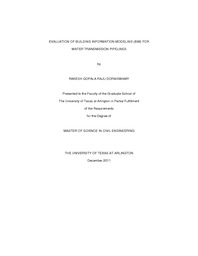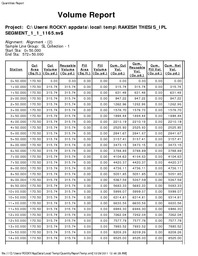| dc.description.abstract | In the construction industry, water transmission pipelines projects typically require two-dimensional drawings for transferring design data to the field. These drawings are referred as construction documents and serve as the source documents for subsequent facility management. However, two-dimensional drawings become difficult to interpret when there are too many entities involved needing information. In addition, when there are too many drawings for separate components such as plans, sections, and details, the chances of errors and omissions are more likely to happen. On the other hand, Building Information Modeling (BIM) is a new trend in construction industry and is being increasingly used by the Architecture, Engineering, and Construction (AEC) industry. In BIM, 4D models that integrate physical 3D elements with time are created. Also, it has been proven that BIM has several benefits over an entire lifecycle of a project such as making design decisions and assessing reliability of project data and project constructability all of which helps to reduce building life-cycle costs, Requests for Information (RFI) and change orders. BIM also improves delivery time and facilitates quality assurance, value engineering and conflict analysis, equipment setup, and progress monitoring. However, despite BIM's many benefits, its use in civil infrastructure projects has been very limited. Hence, the main intention of this research was to evaluate the applicability of BIM to a water transmission pipelines project that consists of large diameter pipes, and assess the outcome and efficiency of such works. The basic methodology for this thesis uses a combination of quantitative and qualitative methods, whereby a survey was prepared and implemented from which a BIM model for a specific water transmission pipeline project was created. The survey gathered information about industry opinion on evaluating and implementing BIM for water transmission pipelines. The water transmission pipeline BIM model created here can be applied or adapted as a standard model for the entire water pipeline industry. Some of the survey respondents indicated that the pipeline industry is lacking behind in implementing BIM and would have a lot to gain from the BIM technology. Finally, it was found that creating a BIM model had some benefits over the traditional method, such as accurate quantity takeoffs, visualization of existing utilities, automation in design standards, and reduction in drawing errors or omissions. | en_US |


